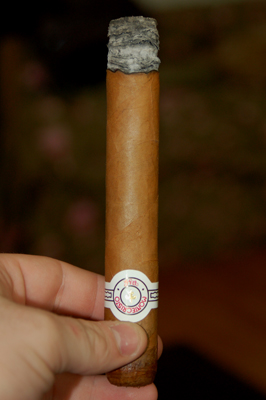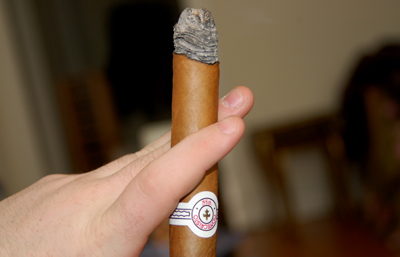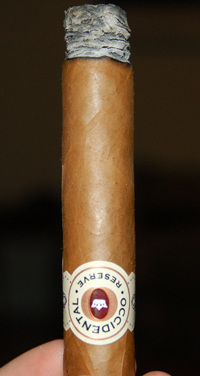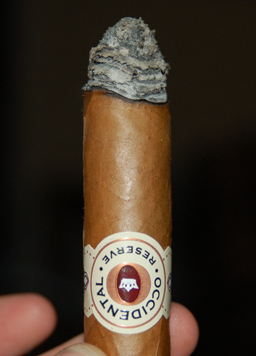(Here’s an interview I did for Marketing News in conjunction with a cover story I wrote on the early adopter community. Enjoy!)
Early adopters, especially in the consumer electronics world, were the focus of the 11/1 cover story of Marketing News. Who would know more about them than Peter Rojas, co-founder and editor-in-chief of Engadget, one the world’s leading tech blogs.
In an exclusive interview with MN staff writer Daniel B. Honigman, Rojas talks to us about early adopters, Engadget and bad PR folks.

Peter Rojas is chillin’ (Photo courtesy Peter Rojas)
Before you were a tech reporter, obviously you were a tech enthusiast. What got you hooked on a product? Was it the marketing or the product itself?
I got into technology through my father, so it’s hard to say. He was a physician who was very passionate about home theater and early computer programming, and he turned me onto it from there. Technology is something that was always around and part of my life.
How do you think tech companies reached out to consumers [like your father] in the past, and how do you think that part of it has changed?
I think there are two ways electronics companies try to hit early adopters: One was in trade and enthusiast publications like Stereophile, and then the other was obviously point-of-sale. It was about having people who were good at explaining the merits of various products, whether at the AV store or, increasingly, at the big-box stores.
The Internet has really transformed that. Now you have an opportunity for the enthusiasts to communicate among themselves, and that’s what Engadget is. It’s a bunch of people who are really enthusiastic and passionate about technology sharing that passion. I’m a journalist, but I also consider myself a member of the Engadget audience. In a lot of ways, we’re writing for ourselves. We feel there’s no reason for us to bullshit ourselves when we write, and I think that’s the difference. The community has a way to share its knowledge, expertise and experiences.
In a way, it transforms marketing into a very different beast. If you have a poor product, you used to be able to market your way to some success if you had good advertising and PR.
These days, you can’t do that. If you don’t have a good product, there’s not much you can do to make it a success. It’s the community that makes something a success or a failure these days. For companies that have great products and stand behind them, marketing is just about turning people on to the product in really organic ways.
For marketers, is it getting easier to reach early adopters because there are more avenues—blogs, sites, enthusiast groups—or is it harder to reach them because there are just more products out there?
It’s both at the same time. The Web offers more of everything, so it’s easier and harder to reach people. It just depends on the product you have, but I think if you have something that’s really innovative, unique, or just resonates with people, it’s one of those things where the cream rises to the top.
If you look at Engadget, we constantly have our ear to the ground, because our job is basically to turn people on to new and exciting things. We’re also racing to be the first to write about a cool or exciting product, and we’re one of many sites, whether it’s blogs or community forums or whatever. For us, if you have something great, we want to share that with the world, so to speak. Have something interesting and we’ll write about it.
Generally speaking, is the innovation we see now different from what we’ve seen in the past? Is it more exciting or is it just documented better?
There are a lot of really exciting things going on now. It’s a very relative judgment, though, so it’s the sort of thing you can’t judge. We’re in the moment.
I was speaking with several consumer electronic companies that seek out early adopter feedback in different ways, with focus groups, forums, that sort of thing. Have you ever participated in any of these?
Not really. I don’t like to have that relationship with the companies we’re covering. I’m sure I have at some point, but not lately.
So now that you do have Engadget, how do technology companies market to you? I’m sure you get lots of pitches every day.
I do. I get an endless amount (laughs).
How many?
Oh, man. I don’t even know; maybe about 75 a day. And by and large, I’d say most of them are completely tone-deaf.
How so?
Sending out a generic press release is a terrible way to get my—or anyone’s—attention. Everyone knows that, but for some reason people still do it. I think there’s very little downside to doing it. The worst that can happen is you’ll be ignored. Every once in a while, someone will send out an awful press release and they’ll be mocked, but that’s rare.
There are companies that put out press releases every 2-3 days and I put up a post mocking them, and, of course, they end up going out of business. Issuing lots of press releases seem to be a good sign that there’s something going wrong at a company, rather than something right.
You can tell when someone contacts you if they’ve read the site. Any journalist or blogger will tell you if you understand what their [news outlet] covers. I think it means marketers and PR people need to work harder. I work hard, and there’s no reason they shouldn’t work harder.
Instead of blasting out to lists of 5,000 sites, why not hire people who focus on and develop a relationship with only a few outlets? It’s not that we’re going to get chummy and I’ll overlook your faults or make thigns easier, but if I know you’re not going to waste my time when you have something to share, you will get my attention. There are marketers or PR people that, when they call me, I’ll take their call.
That parallels the conversations I’ve had with technology companies that seem to cultivate relationships with its early adopters and, as a result, they come up with some very innovative products. Out of curiosity, is the Engadget audience all early adopters or are they regular people looking to make educated decisions? Who are your readers?
When you have 9 million readers, you run the gamut. We have people who are early adopters, we have people who are leading-edge adopters, we have people who are at the companies making stuff, we have enthusiasts and hackers who are pushing the limits of their hardware, and we have more casual people who discover the page through Google when they’re looking for the iPhone.
By and large, with Engadget, we try to stay focused on offering in-depth articles, because our most important audience is the enthusiasts who, for example, follow new cell phones like other people follow sports. That’s who we want to stay true. People ask us if we’ve had to water the site down to appeal to a wider audience, but we’ve been able to actually grow the audience by staying true to what we’re all about.





